[press release]
Canada Post to unveil stamp celebrating the Vancouver Asahi baseball team
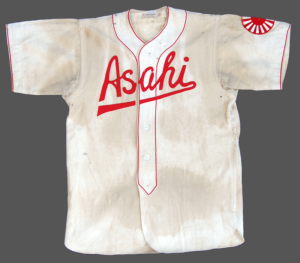 BURNABY, BC, April 18, 2019 /CNW/ – Canada Post invites you to the unveiling of the stamp commemorating the Vancouver Asahi baseball team on Wednesday, April 24. The baseball team, made up of Japanese-Canadians, was formed in 1914 and played until 1941.
BURNABY, BC, April 18, 2019 /CNW/ – Canada Post invites you to the unveiling of the stamp commemorating the Vancouver Asahi baseball team on Wednesday, April 24. The baseball team, made up of Japanese-Canadians, was formed in 1914 and played until 1941.
WHAT: Unveiling the commemorative stamp celebrating the Vancouver Asahi baseball team that played from 1914 to 1941
WHERE: Nikkei National Museum and Cultural Centre
6688 Southoaks Crescent, Burnaby, B.C.
WHEN: Wednesday, April 24, 6:30 pm
Updated April 25, 2019:
[press release]
Canada Post’s newest stamp honours the Vancouver Asahi
Last survivor of the team that invented “brain ball” helps lift the veil on the stamp
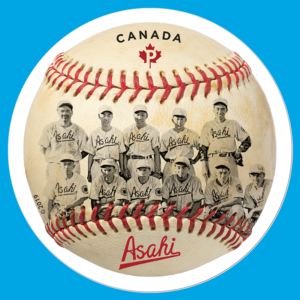 BURNABY, B.C. – Canada Post today released a stamp that honours an amateur Japanese-Canadian baseball team that helped remove racial barriers through sport.
BURNABY, B.C. – Canada Post today released a stamp that honours an amateur Japanese-Canadian baseball team that helped remove racial barriers through sport.
The Vancouver Asahi story is well-known in baseball circles, but the stamp honouring the team is about more than baseball. It also tells a uniquely Canadian story about a dark time in our country’s history – a time of overt racism and fear.
It tells the story of adversity, determination and fortitude – a tragic story that ended in reconciliation and forgiveness.
Formed in 1914, the Asahi thrilled fans and filled Japanese Canadians with hope over almost three decades of play on Vancouver’s east side. The team won many senior league championships before being forced to disband shortly after Canada declared war on Japan in 1941. During the Second World War, Canada interned more than 20,000 people of Japanese descent, most of them Canadian citizens.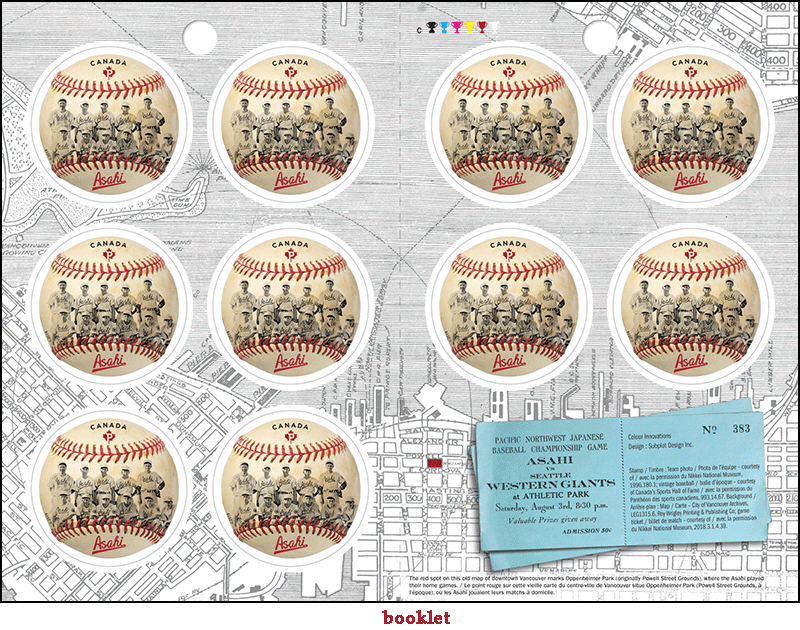
“Canada’s forcible confinement of Japanese-Canadians during the Second World War remains one of the most tragic events in Canadian history,” says the Honourable Carla Qualtrough, Minister of Public Services and Procurement and Accessibility, who is responsible for Canada Post. “This stamp reflects the Asahi’s determination to overcome racism and discrimination through the power of sport. Asahi players exhibited integrity, honour and fair play and were shining examples of what it means to be truly Canadian.”
The Asahi developed a unique style of play to compete against bigger, more powerful teams. Dubbed “brain ball,” it involved bunts, base stealing and squeeze plays to score runs – and wins. Their style of play was so successful that, in 1927, the team won a game 3-1 without technically collecting a hit.
The Asahi grew to near mythic proportions within the Japanese-Canadian community; most boys in Vancouver’s “Little Tokyo” dreamed of playing for the team.
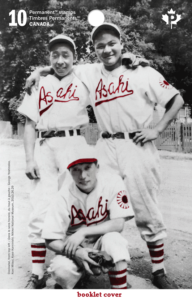 Kaye Kaminishi, a third baseman and the last surviving member of the Vancouver Asahi, helped unveil the stamp at the Nikkei National Museum & Cultural Centre. Ninety-seven today, he was joined by players from the Asahi Baseball Association, which was inspired by the original team.
Kaye Kaminishi, a third baseman and the last surviving member of the Vancouver Asahi, helped unveil the stamp at the Nikkei National Museum & Cultural Centre. Ninety-seven today, he was joined by players from the Asahi Baseball Association, which was inspired by the original team.
The Vancouver Asahi stamp displays 11 Asahi players from the 1940 team, including Kaminishi, who appears in the back row, second from left. Designed by Subplot Inc. of Vancouver, the baseball-shaped stamp is available in booklets of 10. There is also an Official First Day Cover cancelled in Vancouver.
[communiqué]
Le plus récent timbre de Postes Canada rend hommage aux Vancouver Asahi
Le dernier membre encore en vie de l’équipe qui a inventé le brain ball dévoile le nouveau timbre.
BURNABY (C.-B.) – Aujourd’hui, Postes Canada a émis un timbre mettant en vedette une équipe de baseball amateur nippo-canadienne qui a contribué à faire tomber les barrières raciales grâce au sport.
L’histoire des Vancouver Asahi est bien connue dans le monde du baseball, mais le timbre n’est pas simplement un hommage à la célèbre équipe.
Évoquant une période sombre de l’histoire du Canada, il traite aussi d’adversité, de détermination et de courage, et il rappelle des moments tragiques qui ont néanmoins fait place à la réconciliation et au pardon.
Formée en 1914, l’équipe des Asahi a ravi les partisans et donné de l’espoir aux Canadiens d’origine japonaise pendant presque trois décennies dans l’est de Vancouver. L’équipe a remporté de nombreux championnats de la ligue senior, puis a été démantelée après que le Canada ait déclaré la guerre au Japon en 1941. Durant la Seconde Guerre mondiale, le pays a interné plus de 20 000 personnes d’ascendance japonaise, la plupart des citoyens canadiens.
« La détention des Canadiens d’origine japonaise pendant la Seconde Guerre mondiale demeure l’un des événements les plus tragiques de l’histoire du Canada », affirme l’honorable Carla Qualtrough, ministre des Services publics et de l’Approvisionnement et de l’Accessibilité, et ministre responsable de Postes Canada. « Ce timbre témoigne de la détermination des Asahi à vaincre le racisme et la discrimination grâce au pouvoir du sport. Les joueurs des Vancouver Asahi ont fait preuve d’intégrité, d’honneur et d’esprit sportif. Ils sont de brillants exemples de ce que c’est que d’être Canadien. »
Les Asahi ont élaboré un style de jeu unique pour se mesurer à des équipes plus puissantes. Qualifiée de brain ball (jeu astucieux), cette stratégie combinait les amortis, les vols de buts et les squeezes pour marquer des points et remporter des victoires. Elle fonctionnait si bien qu’en 1927, l’équipe a gagné un match 3 à 1 sans jamais vraiment frapper la balle.
 La popularité de l’équipe a pris une ampleur extraordinaire au sein de la communauté nippo-canadienne, et la plupart des garçons du Petit Tokyo de Vancouver rêvaient de faire partie des Asahi.
La popularité de l’équipe a pris une ampleur extraordinaire au sein de la communauté nippo-canadienne, et la plupart des garçons du Petit Tokyo de Vancouver rêvaient de faire partie des Asahi.
Kaye Kaminishi, joueur de troisième but et dernier membre des Vancouver Asahi encore en vie, a participé au dévoilement du timbre au Musée national et centre culturel Nikkei. Aujourd’hui âgé de 97 ans, il était accompagné des joueurs de l’Asahi Baseball Association, une organisation qui s’inspire de l’équipe initiale.
Sur le timbre des Vancouver Asahi, on voit 11 joueurs de l’équipe des Asahi en 1940, dont M. Kaminishi, qui est le deuxième à partir de la gauche, dans la rangée arrière. Conçus par l’entreprise Subplot Design Inc. de Vancouver, les timbres en forme de balle de baseball sont offerts en carnets de 10. Le pli Premier Jour officiel porte la mention « Vancouver BC ».
Added April 25th:
Photos from the unveiling: Ex-Asahi player Kaye Kaminishi points to himself in the stamp design. Three hundred people attended the ceremony.
Ex-Asahi player Kaye Kaminishi points to himself in the stamp design. Three hundred people attended the ceremony. Kaye Kaminishi, actor George Takei and current members of the Asahi team.
Kaye Kaminishi, actor George Takei and current members of the Asahi team.
Takei, himself interned by the U.S. during World War II, took time off from a film shoot in the area. He is best known for playing Ensign Sulu on the original “Star Trek” television series.  Takei and Kaminishi. Photos courtesy Pinpoint National Photography/Canada Post.
Takei and Kaminishi. Photos courtesy Pinpoint National Photography/Canada Post.
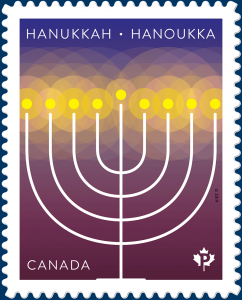 MONTRÉAL – Hanukkah begins on the 25th day of Kislev, the third month of the Jewish calendar year, and lasts for eight days. In 2019, the festival occurs from nightfall on December 22 until nightfall on December 30. Canada Post is issuing this stamp today, well in advance of the celebration, so that Canadians can make their Hanukkah cards and other mail more festive.
MONTRÉAL – Hanukkah begins on the 25th day of Kislev, the third month of the Jewish calendar year, and lasts for eight days. In 2019, the festival occurs from nightfall on December 22 until nightfall on December 30. Canada Post is issuing this stamp today, well in advance of the celebration, so that Canadians can make their Hanukkah cards and other mail more festive. MONTRÉAL – D’une durée de huit jours, Hanoukka est célébrée à partir du 25e jour de Kislev, troisième mois du calendrier hébraïque. En 2019, le festival commence au coucher du soleil le 22 décembre et prend fin au coucher du soleil le 30 décembre. Postes Canada émet le timbre aujourd’hui, bien avant la célébration, pour que les Canadiens puissent égayer leurs cartes et leurs autres envois.
MONTRÉAL – D’une durée de huit jours, Hanoukka est célébrée à partir du 25e jour de Kislev, troisième mois du calendrier hébraïque. En 2019, le festival commence au coucher du soleil le 22 décembre et prend fin au coucher du soleil le 30 décembre. Postes Canada émet le timbre aujourd’hui, bien avant la célébration, pour que les Canadiens puissent égayer leurs cartes et leurs autres envois.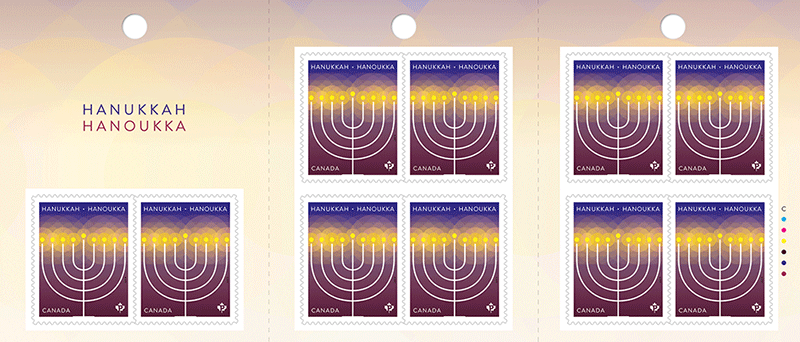 The Official First Day Covers:
The Official First Day Covers: 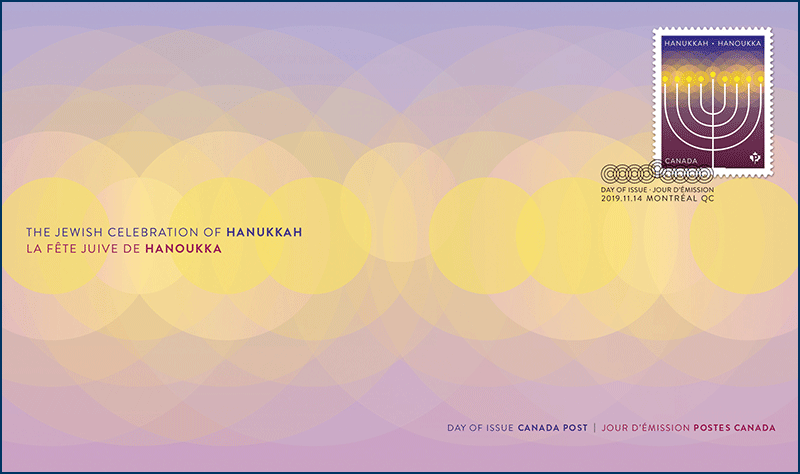 Technical Specifications:
Technical Specifications:

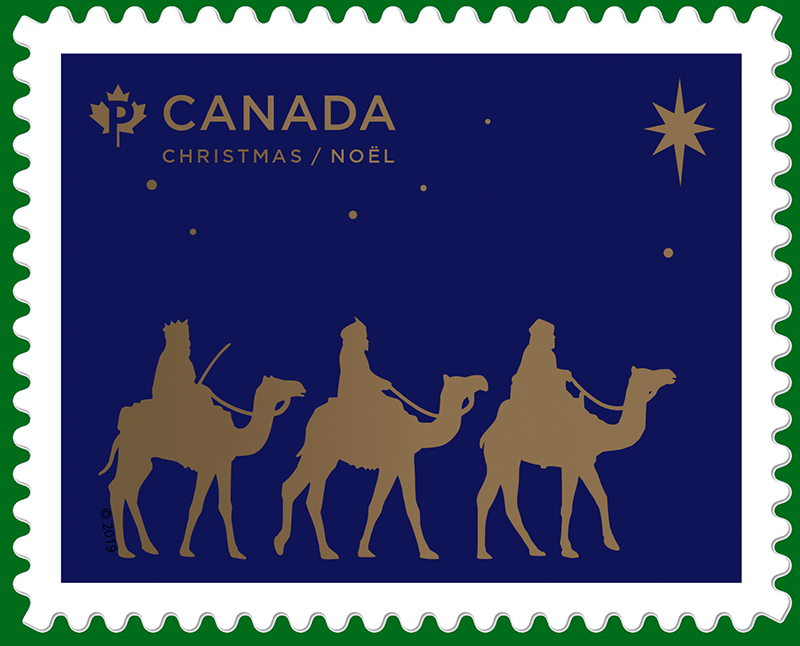 [press release]
[press release] The official first day cover:
The official first day cover: 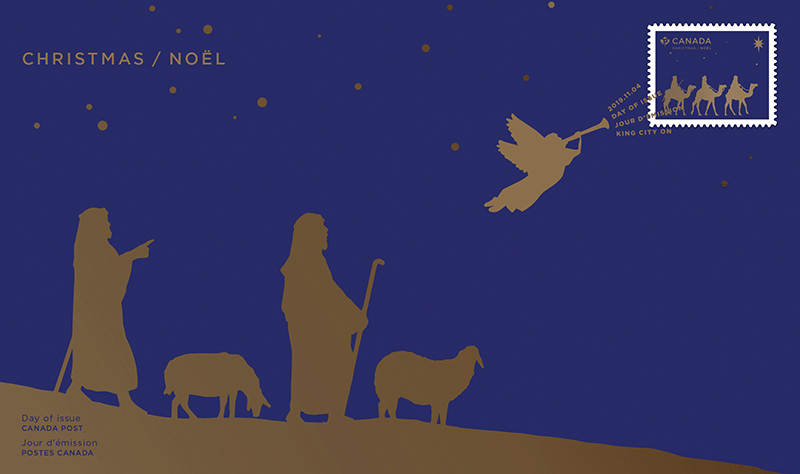
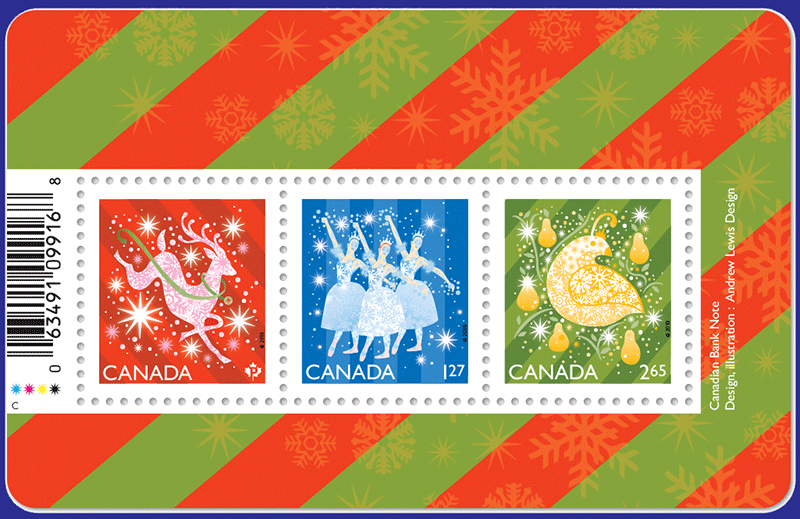
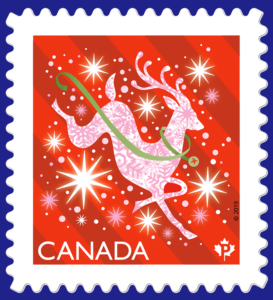 up their December holiday mail with festive stamps. This year, Canada Post continues the tradition – and mailers can choose stamps depicting a variety of seasonal imagery.
up their December holiday mail with festive stamps. This year, Canada Post continues the tradition – and mailers can choose stamps depicting a variety of seasonal imagery.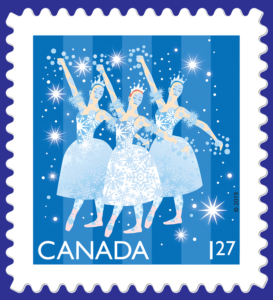 your holiday mail.
your holiday mail.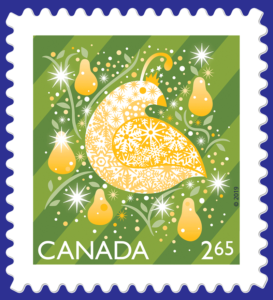 Vancouver, raconte l’histoire des Mages, ces sages de l’Orient qui auraient suivi une étoile brillante jusqu’à Bethléem pour apporter des présents au roi nouveau-né.
Vancouver, raconte l’histoire des Mages, ces sages de l’Orient qui auraient suivi une étoile brillante jusqu’à Bethléem pour apporter des présents au roi nouveau-né. The official first day cover:
The official first day cover: 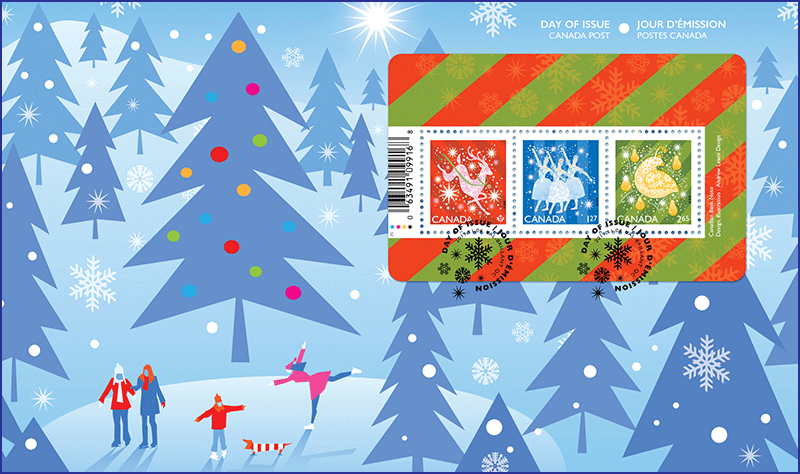
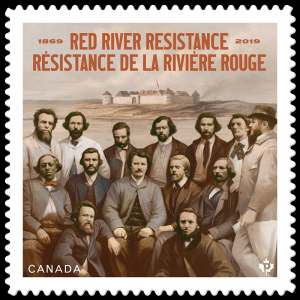 WINNIPEG – Canada Post on November 6th issued a stamp marking the 150th anniversary of the Red River Resistance of 1869-70. It was a turbulent time when Métis rights were asserted, leading to negotiations that shaped the creation of Manitoba as a province.
WINNIPEG – Canada Post on November 6th issued a stamp marking the 150th anniversary of the Red River Resistance of 1869-70. It was a turbulent time when Métis rights were asserted, leading to negotiations that shaped the creation of Manitoba as a province.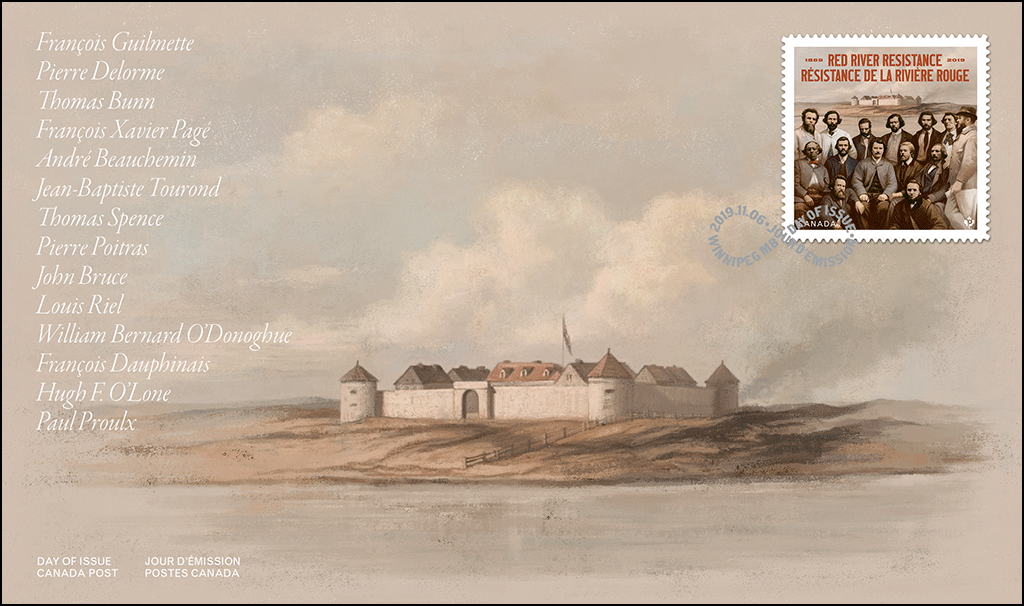 And a closeup and enhancement of the list of names:
And a closeup and enhancement of the list of names: 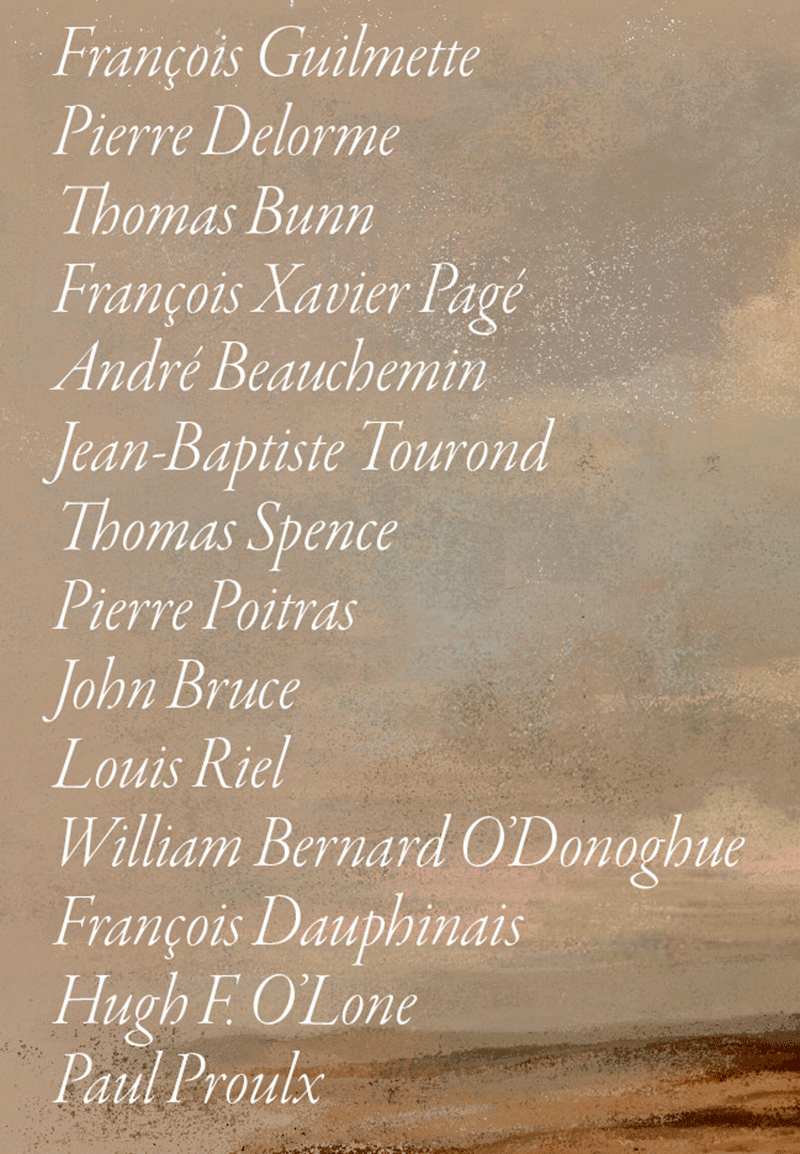
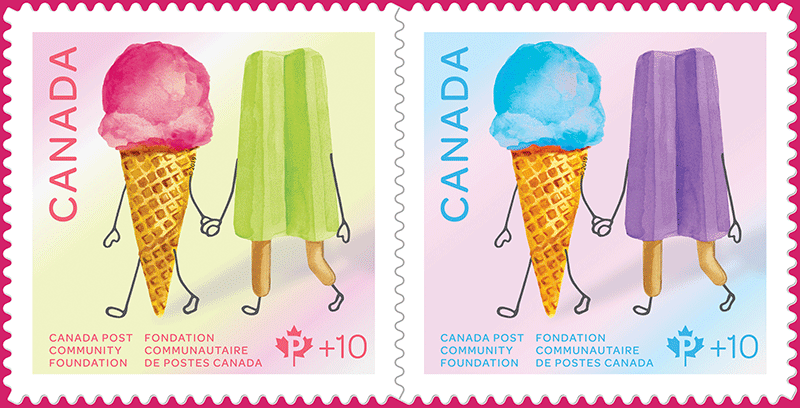
 employees, and a year-round employee payroll donation program. Funds go to organizations that operate in the province or territory in which they were raised.
employees, and a year-round employee payroll donation program. Funds go to organizations that operate in the province or territory in which they were raised.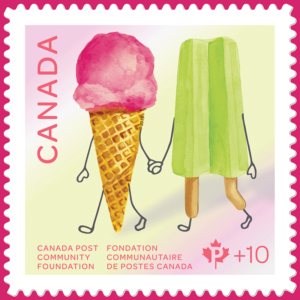 Easter Seals Alberta, for its Camp Horizon Earth Program, an adaptive hiking program for kids with disabilities or medical conditions;
Easter Seals Alberta, for its Camp Horizon Earth Program, an adaptive hiking program for kids with disabilities or medical conditions;


 Unfortunately, some populations are threatened by habitat loss and human activity – making conservation efforts critical to their survival. The Committee on the Status of Endangered Wildlife in Canada (COSEWIC) has assessed polar bears and western populations of the grizzly bear as being of special concern. Polar bears are affected significantly by the loss of sea ice due to climate change, while grizzlies are dwindling in number due to human encroachment.
Unfortunately, some populations are threatened by habitat loss and human activity – making conservation efforts critical to their survival. The Committee on the Status of Endangered Wildlife in Canada (COSEWIC) has assessed polar bears and western populations of the grizzly bear as being of special concern. Polar bears are affected significantly by the loss of sea ice due to climate change, while grizzlies are dwindling in number due to human encroachment. The
The  Found in coastal regions of British Columbia, the
Found in coastal regions of British Columbia, the  the world for more than 20 years capturing award-winning images.
the world for more than 20 years capturing award-winning images. [The link directly to the Bears stamps is
[The link directly to the Bears stamps is  Here is the press sheet for this issue:
Here is the press sheet for this issue:  Here is the Official First Day Covers:
Here is the Official First Day Covers:  Here is the pane of stamps:
Here is the pane of stamps:  Here is the booklet version:
Here is the booklet version:
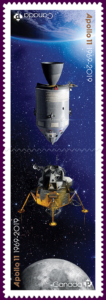 LONGUEUIL, QUE. – Canada Post today issued two commemorative stamps celebrating the 50th anniversary of the historic Apollo 11 mission that landed humans on the moon for the first time – and the Canadians who helped make it possible.
LONGUEUIL, QUE. – Canada Post today issued two commemorative stamps celebrating the 50th anniversary of the historic Apollo 11 mission that landed humans on the moon for the first time – and the Canadians who helped make it possible.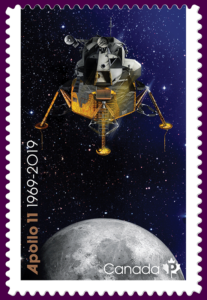 Jim Chamberlin was a leading figure in aircraft design in Canada before moving to the U.S. in 1959 to work for NASA. He became head of engineering for Project Mercury, the first human spaceflight program for the United States, and project manager and chief designer for the Gemini spacecraft that preceded Apollo. He helped determine the type of spacecraft that would transport the Apollo 11 astronauts and was one of the first at NASA to recognize that flying directly to the moon wasn’t the best option. Instead, Chamberlin favoured having a smaller landing module travel to lunar orbit attached to the main spacecraft, then descend to the moon’s surface and later reconnect with the main spacecraft. This approach, known as lunar orbit rendezvous, became fundamental to the Apollo program.
Jim Chamberlin was a leading figure in aircraft design in Canada before moving to the U.S. in 1959 to work for NASA. He became head of engineering for Project Mercury, the first human spaceflight program for the United States, and project manager and chief designer for the Gemini spacecraft that preceded Apollo. He helped determine the type of spacecraft that would transport the Apollo 11 astronauts and was one of the first at NASA to recognize that flying directly to the moon wasn’t the best option. Instead, Chamberlin favoured having a smaller landing module travel to lunar orbit attached to the main spacecraft, then descend to the moon’s surface and later reconnect with the main spacecraft. This approach, known as lunar orbit rendezvous, became fundamental to the Apollo program.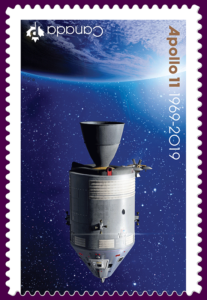 nada’s top aircraft engineers before being hired by NASA in 1959, Owen Maynard went on to head the Systems Engineering Division for the Apollo spacecraft program – effectively making him the chief engineer. He sketched early designs of the main Apollo command module and is credited as the person at NASA most responsible for the design of the lunar lander. He also served as Chief of the Mission Operations Division and was responsible for planning the sequence of missions that led to Apollo 11. Like Chamberlin, Maynard also played an important role in determining the safest way to reach and land on the moon.
nada’s top aircraft engineers before being hired by NASA in 1959, Owen Maynard went on to head the Systems Engineering Division for the Apollo spacecraft program – effectively making him the chief engineer. He sketched early designs of the main Apollo command module and is credited as the person at NASA most responsible for the design of the lunar lander. He also served as Chief of the Mission Operations Division and was responsible for planning the sequence of missions that led to Apollo 11. Like Chamberlin, Maynard also played an important role in determining the safest way to reach and land on the moon.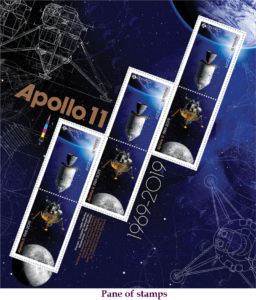 The first legs to stand on the moon didn’t belong to Neil Armstrong – they were from Héroux Machine Parts Limited of Longueuil, Quebec. Now known as Héroux-Devtek, the company manufactured the spider-like landing gear legs on the lunar module to NASA’s specifications. The legs were also part of the launch platform that let Neil Armstrong and Buzz Aldrin lift off from the moon and reconnect with the main command module. Those legs remain on the moon at the Apollo 11 landing site, in an area known as the Sea of Tranquility.
The first legs to stand on the moon didn’t belong to Neil Armstrong – they were from Héroux Machine Parts Limited of Longueuil, Quebec. Now known as Héroux-Devtek, the company manufactured the spider-like landing gear legs on the lunar module to NASA’s specifications. The legs were also part of the launch platform that let Neil Armstrong and Buzz Aldrin lift off from the moon and reconnect with the main command module. Those legs remain on the moon at the Apollo 11 landing site, in an area known as the Sea of Tranquility.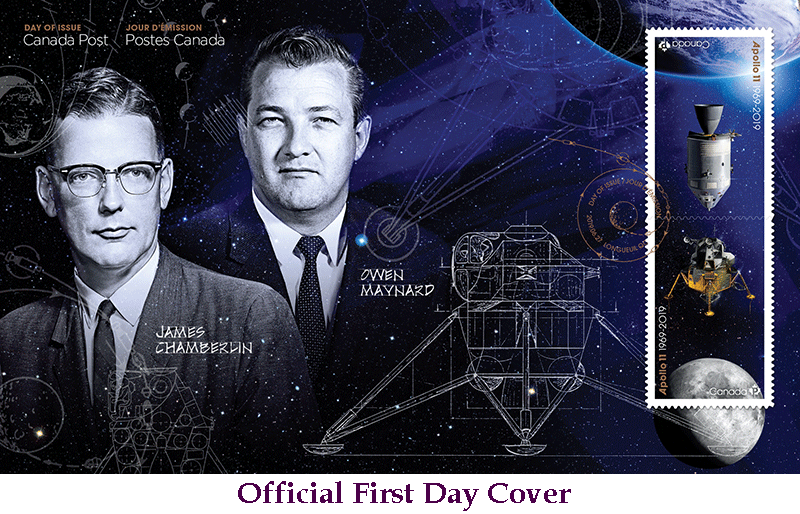
 [en Francais]
[en Francais]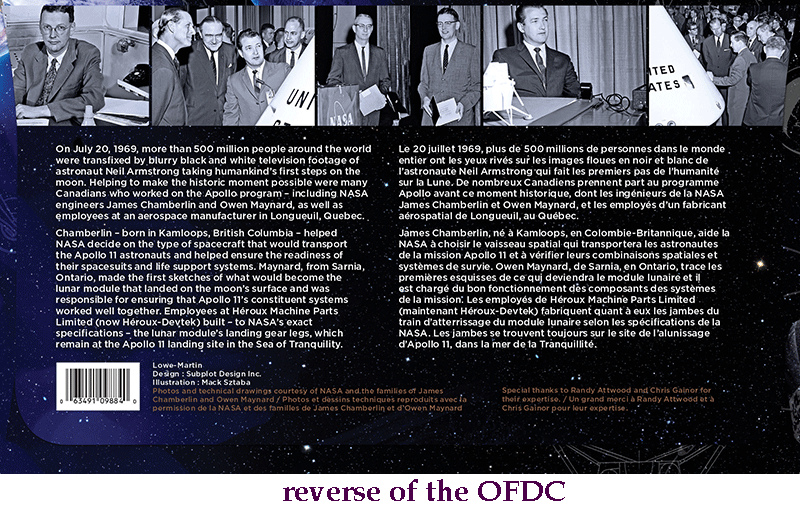
 BURNABY, BC, April 18, 2019 /CNW/ – Canada Post invites you to the unveiling of the stamp commemorating the Vancouver Asahi baseball team on Wednesday, April 24. The baseball team, made up of Japanese-Canadians, was formed in 1914 and played until 1941.
BURNABY, BC, April 18, 2019 /CNW/ – Canada Post invites you to the unveiling of the stamp commemorating the Vancouver Asahi baseball team on Wednesday, April 24. The baseball team, made up of Japanese-Canadians, was formed in 1914 and played until 1941. BURNABY, B.C. – Canada Post today released a stamp that honours an amateur Japanese-Canadian baseball team that helped remove racial barriers through sport.
BURNABY, B.C. – Canada Post today released a stamp that honours an amateur Japanese-Canadian baseball team that helped remove racial barriers through sport.

 Kaye Kaminishi, a third baseman and the last surviving member of the Vancouver Asahi, helped unveil the stamp at the Nikkei National Museum & Cultural Centre. Ninety-seven today, he was joined by players from the Asahi Baseball Association, which was inspired by the original team.
Kaye Kaminishi, a third baseman and the last surviving member of the Vancouver Asahi, helped unveil the stamp at the Nikkei National Museum & Cultural Centre. Ninety-seven today, he was joined by players from the Asahi Baseball Association, which was inspired by the original team.

 Kaye Kaminishi, actor George Takei and current members of the Asahi team.
Kaye Kaminishi, actor George Takei and current members of the Asahi team. Takei and Kaminishi. Photos courtesy Pinpoint National Photography/Canada Post.
Takei and Kaminishi. Photos courtesy Pinpoint National Photography/Canada Post.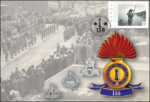 Fusiliers du St-Laurent
Fusiliers du St-Laurent 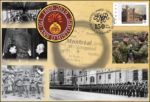 Fusiliers Mont-Royal
Fusiliers Mont-Royal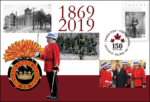 Princess Louise Fusiliers
Princess Louise Fusiliers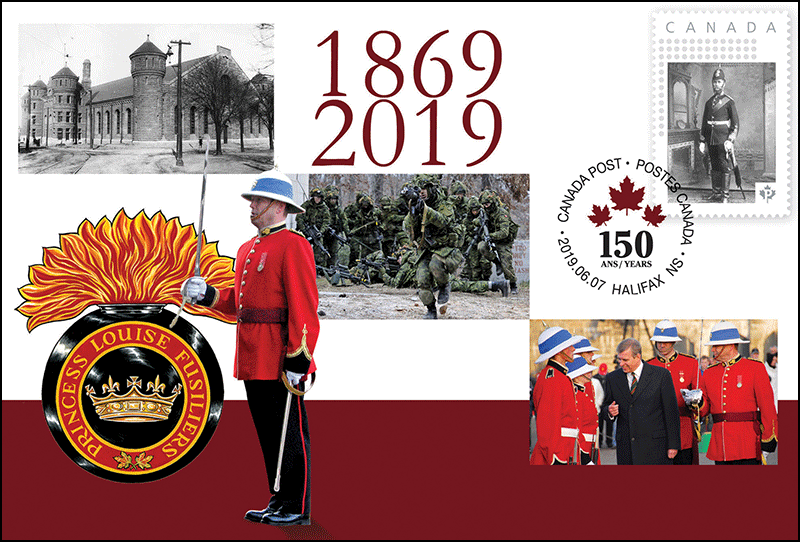
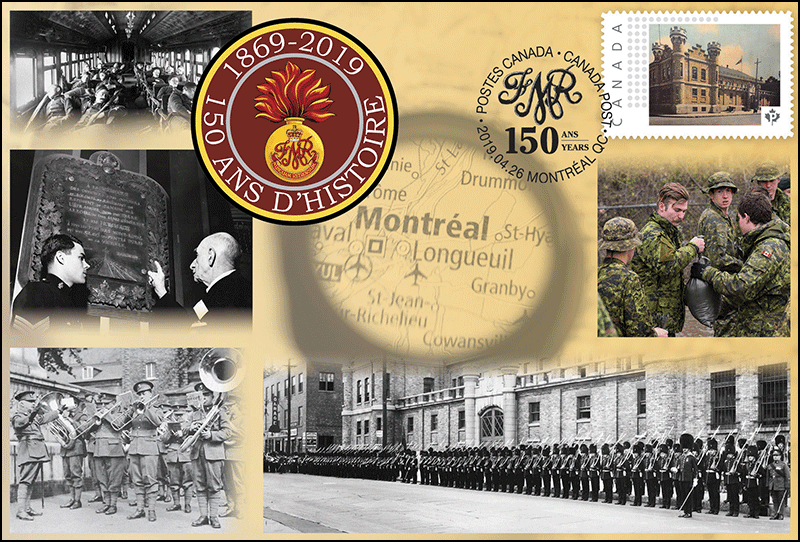
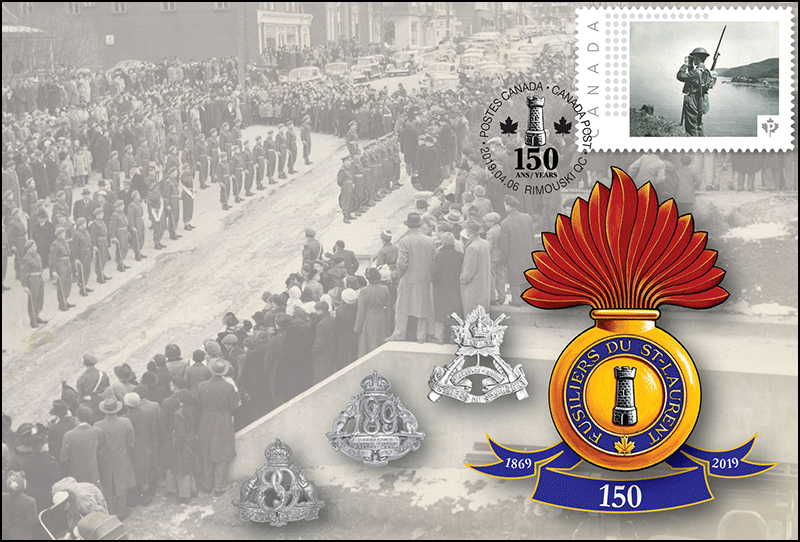
 At the end of the 19th century, there were more than 1,400 covered bridges in rural communities across Canada. Today, only an estimated 140 remain.
At the end of the 19th century, there were more than 1,400 covered bridges in rural communities across Canada. Today, only an estimated 140 remain. Opened in 1901 and covered in 1922, New Brunswick’s Hartland Bridge is the longest of its kind in the world, spanning 391 metres. An engineering marvel, it boasts seven heavy-timber Howe trusses supported by six piers.
Opened in 1901 and covered in 1922, New Brunswick’s Hartland Bridge is the longest of its kind in the world, spanning 391 metres. An engineering marvel, it boasts seven heavy-timber Howe trusses supported by six piers.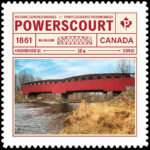 Also known as the Percy Bridge, Quebec’s Powerscourt Bridge, built in 1861, is one of Canada’s oldest covered bridges and the only known example of the McCallum inflexible arched-truss design that is still in existence.
Also known as the Percy Bridge, Quebec’s Powerscourt Bridge, built in 1861, is one of Canada’s oldest covered bridges and the only known example of the McCallum inflexible arched-truss design that is still in existence.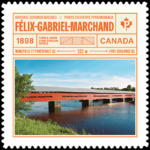 The Félix-Gabriel-Marchand Bridge, extending 152 metres from end to end, is Quebec’s longest covered bridge and one of its oldest. Built in 1898, it is unique in the province for its combination of Queen Post and Town lattice trusses.
The Félix-Gabriel-Marchand Bridge, extending 152 metres from end to end, is Quebec’s longest covered bridge and one of its oldest. Built in 1898, it is unique in the province for its combination of Queen Post and Town lattice trusses.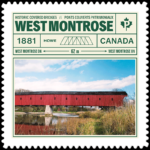 Ontario’s last remaining historic covered bridge, the 60-metre West Montrose Bridge – opened in 1881 over the Grand River – features Howe trusses and louvered window openings.
Ontario’s last remaining historic covered bridge, the 60-metre West Montrose Bridge – opened in 1881 over the Grand River – features Howe trusses and louvered window openings. British Columbia’s Similkameen River, was completed in 1907 and rebuilt in 1926 with its Howe trusses sheathed in wood panelling and cross-bracing exposed overhead. It was converted for automobile use in 1961.
British Columbia’s Similkameen River, was completed in 1907 and rebuilt in 1926 with its Howe trusses sheathed in wood panelling and cross-bracing exposed overhead. It was converted for automobile use in 1961. 
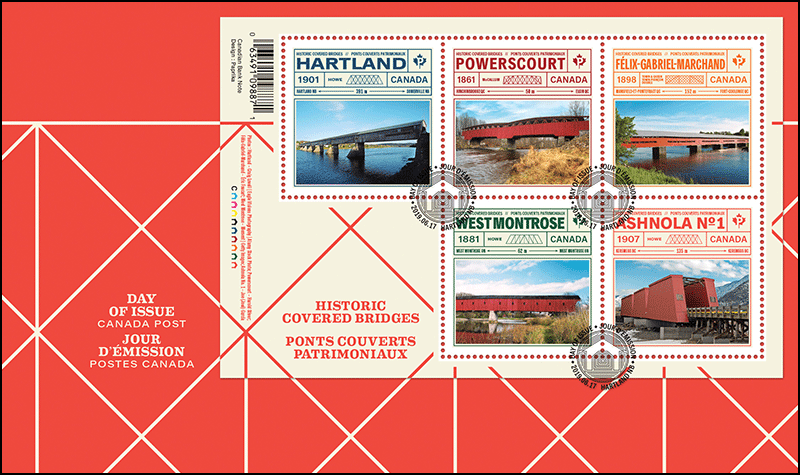
 OTTAWA, June 17, 2019 /CNW/ – Built in a bygone era as vital transportation links spanning rivers, covered bridges are now also portals that invite the imagination back to the age of steam locomotives and horse-drawn buggies.
OTTAWA, June 17, 2019 /CNW/ – Built in a bygone era as vital transportation links spanning rivers, covered bridges are now also portals that invite the imagination back to the age of steam locomotives and horse-drawn buggies.

